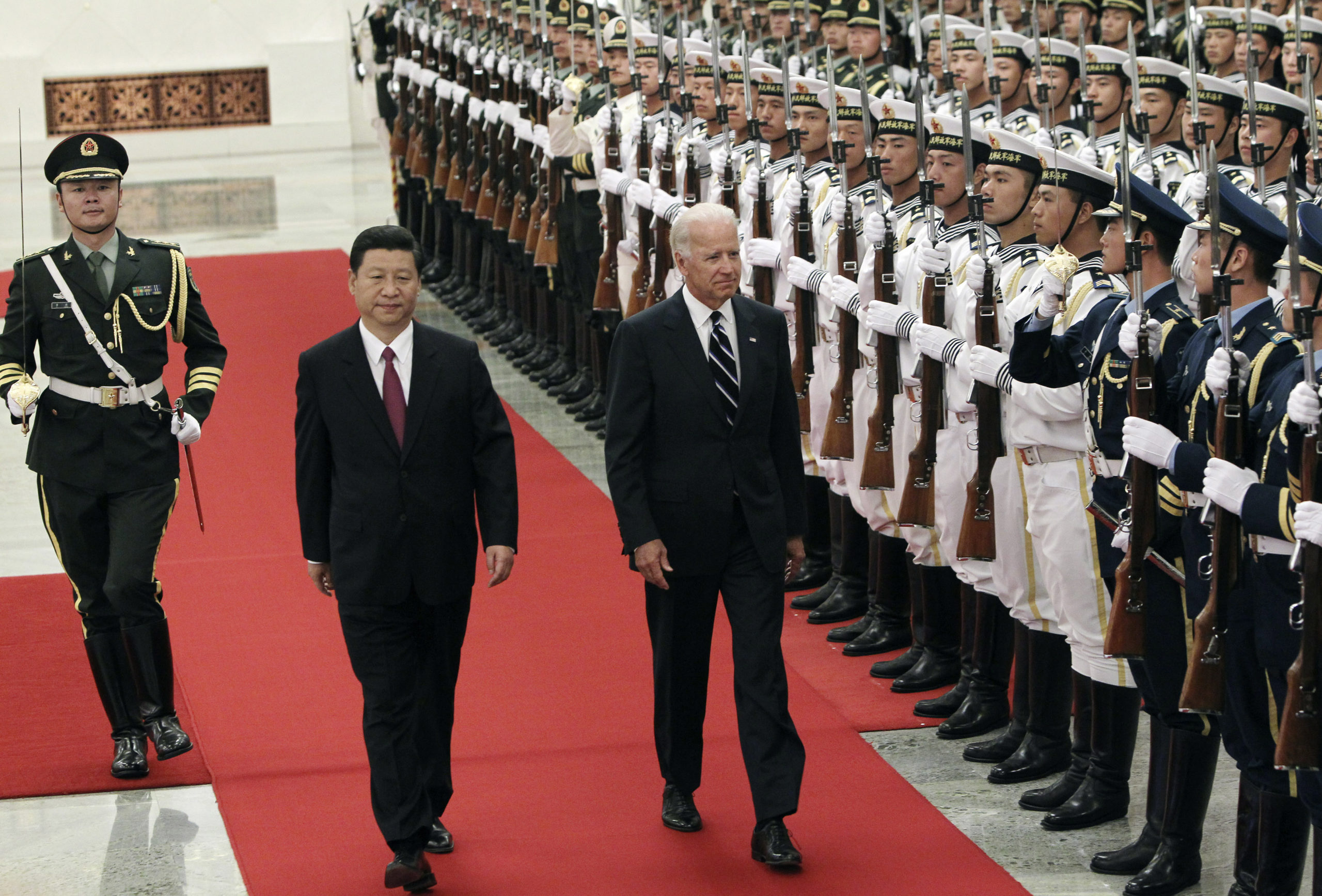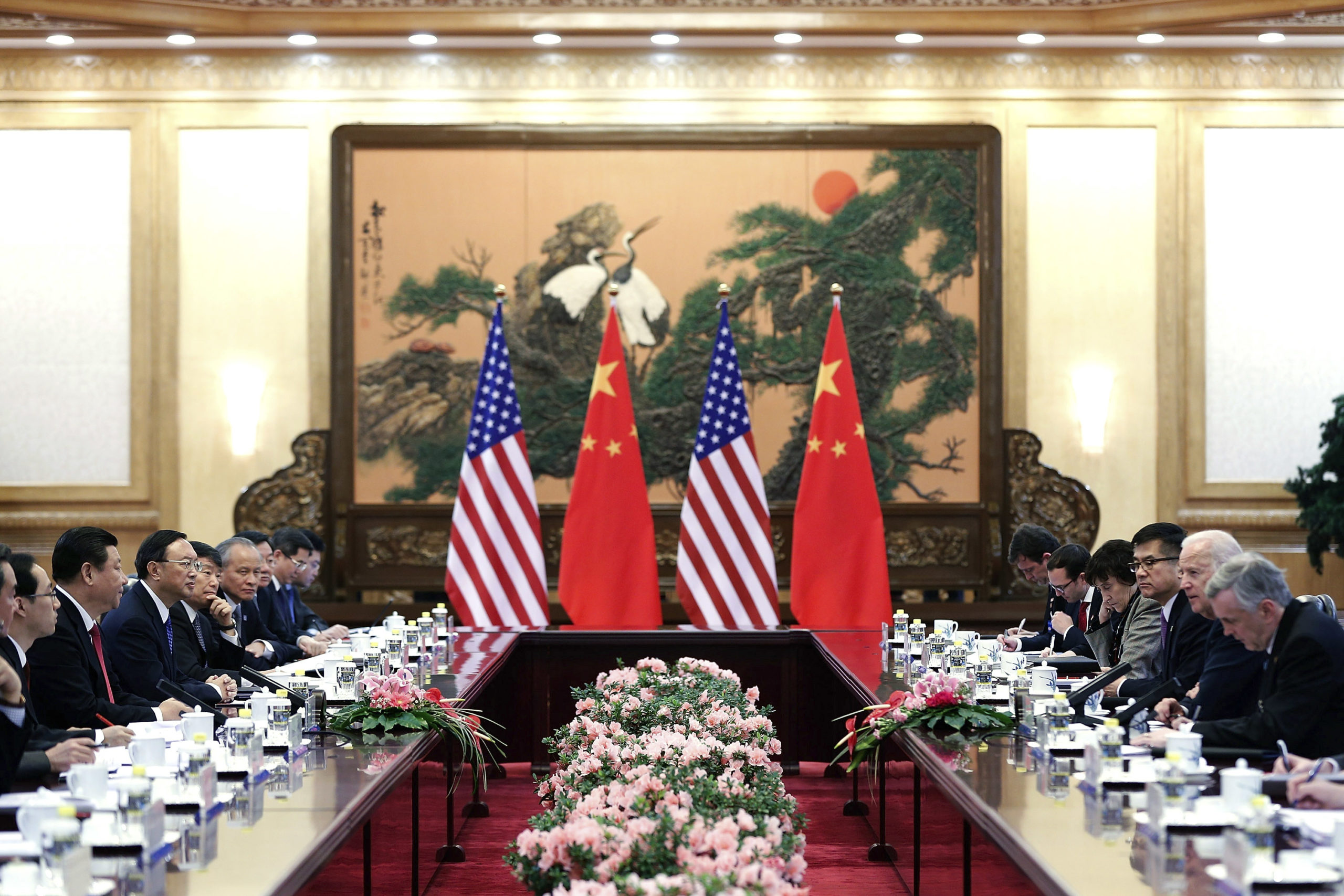Toward an Inclusive & Balanced Regional Order: A New U.S. Strategy in East Asia
Executive Summary
The world faces twin crises — a global pandemic and rising climate chaos — even as an epochal change in the balance of power unfolds in East Asia. In response to these trends, the United States has doubled down on efforts to contain a rising China and maintain its eroding military dominance in the region. Simultaneously, it has neglected economic engagement and diplomatic cooperation with East Asian nations, thereby undermining its ability to manage the Covid–19 pandemic and the climate change challenge. This failed approach is directly harming the interests of the American people.
The United States today is on a course in East Asia that threatens the peace and prosperity of a region that is vital to a wide range of American interests.
America needs a new strategy in East Asia — one that reflects the complexities of a region that desires stable relations with both Beijing and Washington, cannot be dominated by either power, and is moving toward higher levels of economic integration. The United States must foster an inclusive, stable order in East Asia that is designed to manage shared challenges such as climate change and pandemics, promote broad prosperity, and peacefully resolve disputes. It must rebalance U.S. engagement in East Asia toward deeper diplomatic and economic engagement and away from military dominance and political control.
This new U.S. strategy in East Asia entails 10 core components in three overarching areas:
Reprioritize Diplomatic Engagement and Economic Integration
Shift toward inclusive regional diplomacy and cooperative security
• The United States should welcome positive relations between China and other Asian countries and promote inclusive multilateralism to coordinate action on shared interests and resolve disputes. The United States, its allies, China, and other East Asian nations should jointly develop a cooperative agenda for addressing issues of mutual concern, such as climate change, pandemics, financial instability, maritime insecurity, and proliferation of weapons of mass destruction.
Deepen regional economic engagement and promote global technological standards
• Washington should join the Comprehensive and Progressive Trans–Pacific Partnership and explore the possibility of joining the Regional Comprehensive Economic Partnership, while increasing domestic investments in infrastructure, education, and clean energy to ensure a fairer distribution of the national wealth gained from participation in these agreements. The United States should promote reforms to the World Trade Organization that expedite dispute resolution and more explicitly cover technology and investment issues.
Reinvigorate cooperation with China on pandemics, climate change, and trade
• The United States should restore and expand public health ties with China to address the Covid–19 pandemic and future disease outbreaks. Washington and Beijing should look for creative ways to go beyond the Paris Agreement in reducing carbon emissions. The United States must also pursue a more balanced economic strategy toward China. This strategy should seek to foster a cooperative trade relationship with Beijing while protecting key U.S. national security interests and defending against unfair economic practices.
Pursue a More Stable Military Balance with China and Peace on the Korean Peninsula
Restructure U.S. alliances and force posture in East Asia around a defense strategy of denial rather than control
• America should not seek dominance or control in the waters and airspace of the western Pacific, and should instead work with allies to implement a smarter approach to balancing China’s growing power, one centered on denying Chinese control over those same spaces. This new denial strategy should be built on the enhanced defense capabilities of allies in the region, working in tighter coordination with more dispersed U.S. forces playing a more supporting role to allied efforts. This will entail a significant reduction in forward U.S. ground troops and greater reliance on smaller surface ships, submarines, and more agile air forces.
Improve U.S.–China crisis management and mitigate tension in the Taiwan Strait
• Washington must couple deterrence of China with far more active diplomatic efforts to strengthen crisis-management mechanisms and confidence-building measures with Beijing, especially in the Taiwan Strait. The United States must unambiguously reaffirm its One China policy and seek to reduce the militarization of the Taiwan Strait as part of a more balanced policy of reassurance and deterrence.
Reduce military tensions at sea and encourage compromise in maritime disputes
• The United States should work with China and other countries to enhance the security of sea lanes against piracy, shipping congestion, and natural disasters, while protecting the marine environment. Washington should pursue several diplomatic agreements to stabilize the interactions of military and coast guard vessels in maritime East Asia. It should also support mutually agreeable and realistic compromises among claimants in the East and South China Sea disputes.
Undertake new, stabilizing initiatives on nuclear policy and bilateral arms control
Washington should abandon plans to field low-yield tactical weapons and open up a frank dialogue with Beijing on how to increase strategic stability and reduce incentives to engage in an offensive/defensive arms race. It should also acknowledge that China has a credible nuclear deterrent, paving the way for the United States to embrace a no-first-use nuclear policy and modify its military operations in the region accordingly.
Pursue peace and phased denuclearization on the Korean Peninsula
The United States must transition to a policy involving gradual, synchronized steps toward peace and the denuclearization of the Korean Peninsula. This must include security reassurances to North Korea as well as credible commitments to abide by agreements that are reached. Over the long term, Washington should support the emergence of a unified, nonnuclear Korean Peninsula free of foreign military forces.
Bolster U.S. Influence and Appeal through Reforms at Home and Abroad
Implement a targeted approach to human rights promotion
• The United States should separate human rights concerns from geopolitical disputes and bolster multilateral efforts to preserve norms. It should also provide targeted support to repressed peoples and cultures through immigration policy, third-party diplomacy, law enforcement, reform to sanctions regimes and military aid, and humanitarian aid and cultural funding. It should also enter direct dialogues with repressive governments on priority issues.
Strengthen U.S. influence and appeal by enacting domestic reforms
• The United States must enact domestic reforms that will make it more competitive and enhance its influence abroad. America must work to build a more sustainable and equitable form of globalization, strengthen U.S. economic health, and improve its own human and civil rights protections, including for Asian Americans and visitors and immigrants from East Asia.
America’s Interests in East Asia and the Need for a New Strategy
East Asia comprises nearly 20 nations in Northeast and Southeast Asia and accounts for one-third of the Earth’s population, a third of global GDP, and 38 percent of human carbon emissions. The security, safety, and prosperity of the American people depend upon an effective U.S. strategy in East Asia. This strategy must be anchored in a new U.S. commitment to diplomatic engagement and military restraint.
America’s vital national interests in East Asia include:
- Peace and stability, including the avoidance of major wars and arms races;
- Cooperative action to combat the existential threats of climate change and pandemics;
- Open shipping lanes and robust economic relations with countries in the region; and
- Space for each country in the region to choose its own political order.
These interests are not unique to this region: They reflect America’s vital national interests more generally. But these interests are particularly important in East Asia relative to most other regions of the world given America’s deep economic integration with the region, the unique history of the U.S. military presence and Washington’s alliances in the region, and key regional trends. Most notably, China’s rise is changing the balance of power in East Asia, shifting the economic center of gravity toward China and eroding America’s longstanding military primacy in the western Pacific.
In the face of these epochal changes, the United States is failing to make necessary adjustments to its strategy. In the diplomatic and economic spheres, America is alienating East Asian nations by asking them to choose sides in a so-called great-power competition between Washington and Beijing, even while its diplomatic and economic engagement in East Asia drifts. On the military side, the United States is doubling down on dominance, seeking to reestablish overwhelming control of the seas up to China’s coasts. Some of the operational strategies that have been proposed to this end risk leading to early escalation in a conflict, including potential nuclear war. Nor is it clear that such strategies would succeed, as the changing nature of warfare in recent decades has made dominance prohibitively costly. More generally, America’s broader, zero-sum approach toward China is driving a security dilemma with Beijing, confirming Beijing’s worst fears about America’s supposed intention to contain and weaken China. It is also endangering U.S. vital interests in mutually beneficial economic exchange and bilateral cooperation to combat climate change and pandemics.
At the same time, it would be a mistake to respond to these circumstances by completely withdrawing U.S. forces from the western Pacific or allowing China to establish an exclusive sphere of influence in East Asia. Although the United States can significantly reduce its military presence in the Middle East and Europe without endangering vital U.S. interests, East Asia is a somewhat different story. The countries in the region have complex relationships characterized not only by deep economic integration but also by historical animosities and unresolved maritime and territorial disputes. America’s deep military engagement in the region since the end of World War II and the Korean War has also made countries in the region, especially U.S. allies, heavily dependent on the U.S. military presence for preserving stability. Major U.S. military disengagement from East Asia, while possible and even desirable over the long term, would under current circumstances be likely to trigger arms races, nuclear proliferation, and possibly conflicts between the two Koreas, between Beijing and Taipei, and over disputes regarding maritime sovereignty issues. Not only would such conflict cause great suffering to the peoples of East Asia and risk dragging the United States into a war, it would also directly endanger many of America’s other vital interests in the region — cooperation on climate change and pandemics, free flow of commerce, and robust trade and investment.
To protect American interests in East Asia, the United States needs a transformed strategy that bolsters America’s engagement in the region while rejecting an effort to restore all-aspects military dominance as an ill-advised dream.
Moreover, China’s rise as a military power raises legitimate concerns in the region, not least among U.S. allies, and poses some danger to U.S. interests. Short of the use of force, unbalanced Chinese military power could further embolden Beijing to coerce other nations through economic or diplomatic pressure, while weakening those nations’ resolve to resist such coercion. Beijing could apply such coercion in ways that could interfere with U.S. interests and objectives in the region. Additionally, though China’s capabilities and strategy today are generally not oriented toward conquest, its intentions could evolve over time. A more complete military disengagement from the region could hobble America’s ability to reengage militarily in East Asia in time to respond to such an adverse development.
Rather, to protect American interests in East Asia, the United States needs a transformed strategy that bolsters America’s engagement in the region while rejecting an effort to restore all-aspects military dominance as an ill-advised dream. This strategy must rebalance America’s policies to rely more on economic and diplomatic tools than military means. It should prioritize deepening economic and diplomatic engagement as the most effective defense against the paramount threats to U.S. national security — namely, climate change and pandemics.

Shifting America’s priorities in this way requires a strong but transformed military presence in Asia to maintain a balance of power with China and to help U.S. allies defend themselves from coercion or attack. But to do this more effectively and affordably, and in a way that prevents open-ended arms races and early escalation in a conflict, Washington should rethink its defense strategy and restructure its force posture in coordination with allies to focus on denying Chinese control of key air and sea spaces along the East Asia littoral, rather than seeking to reestablish U.S. control over those same spaces. This shift will entail a significant reduction in U.S. ground troops in East Asia, a greater reliance on submarines and small surface platforms rather than large aircraft carrier battle groups, and an emphasis on dispersed and agile air forces and long-range, standoff conventional missile capabilities instead of large numbers of tactical aircraft deployed in forward bases. It will also require allies to invest more in their own defense, adopt denial-oriented capabilities such as resilient coastal and air defense, and work in tighter coordination with dispersed U.S. forces playing a supporting role to allied efforts. The shift to this new defense strategy of denial rather than control or dominance should begin now and should guide U.S. force posture in East Asia over the next 10 to 20 years. As time goes on, the United States should continue to evaluate the strategic environment in East Asia to determine whether or not further reductions in U.S. military presence in the region would be possible.
Washington also must recognize that both the United States and its allies have an interest in improving the tenor of relations with China and ultimately integrating Beijing into inclusive economic and cooperative security mechanisms. Accordingly, Washington should redirect its bilateral security alliances away from a singular focus on countering China or North Korea to a mixed set of goals encompassing not only denial-oriented deterrence but also threat-reduction and confidence-building measures. It should deepen its engagement in broader regional economic and political institutions and facilitate cooperative regional initiatives to deal with common security threats such as climate change and pandemics. Washington should also engage in direct negotiations with China and other involved parties to reduce military tension and arms races over Taiwan and maritime disputes. Finally, the United States should pursue the creation of a peace regime on the Korean Peninsula as an essential step toward the eventual denuclearization of one of East Asia’s most sensitive security hotspots.
This new strategy, centered on robust diplomatic engagement and military restraint, is essential to protect America’s interests in East Asia in an era of dramatic global transformation. The United States must commit to more responsible statecraft in East Asia rather than perpetuating its failed status quo approach if it is adequately to address the region’s radically changing political, economic, and security environment.






